Cybersecurity - Automotive
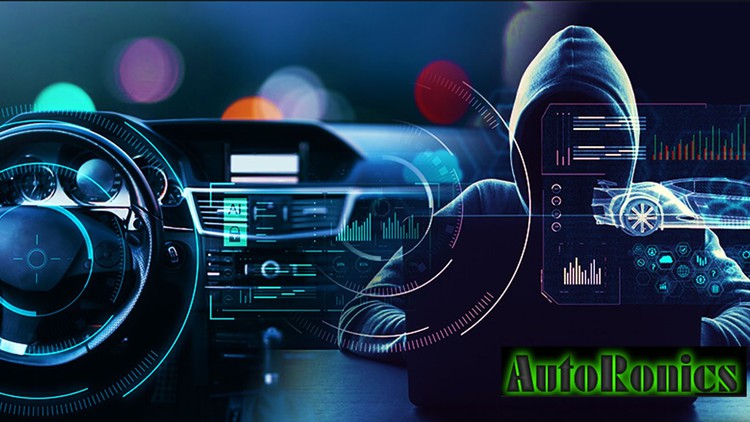
Why take this course?
Course Title: Cybersecurity in Automotive - A Comprehensive Approach to Protecting Your Car from Digital Threats
Headline: Master AES-128, AUTOSAR Crypto stack, ISO21434, TARA, and More for Robust Automotive Cybersecurity!
Course Description:
In the digital era, the automotive industry stands at a crossroads where innovation meets vulnerability. With the advent of autonomous driving, connected cars, electric vehicles, and shared mobility, our cars have evolved into sophisticated pieces of technology that are increasingly susceptible to cyber threats. This evolution necessitates a robust understanding of cybersecurity principles tailored for the automotive domain.
🚗 Understanding the Threat Landscape:
- In the past four years, the frequency of cyberattacks on cars has skyrocketed by 225%, highlighting the urgent need for comprehensive cybersecurity measures.
- A staggering 85% of attacks in 2021 were executed remotely, a stark contrast to physical breaches.
- Back-end servers bore the brunt of 40% of attacks, showcasing the importance of secure network infrastructure.
🔒 Key Statistics on Automotive Cybersecurity Threats:
- Malicious actors became more prevalent, with a 5% increase from 2020 to 2021.
- Data/privacy breaches led the charge at 38%, followed by car theft/break-ins at 27%.
- A chilling 50% of vehicle thefts in 2021 were attributed to keyless entry and key fob attacks.
Why This Course? As the automotive landscape continues to digitalize, cybersecurity will become an integral component of the industry. This course is designed to equip you with the necessary knowledge to:
- Understand and implement the AES-128 encryption standard.
- Work with the AUTOSAR Crypto stack for secure communication within automotive networks.
- Comply with international standards like ISO21434, which provides guidelines for cybersecurity in road vehicles.
- Master TARA (Trusted Automotive Runtime Architecture) for securing and isolating vehicle applications.
- Recognize common cyber attacks and learn how to protect against them.
- Grasp the principles of Public Key Infrastructure (PKI) in automotive systems.
- Ensure confidentiality, integrity, and availability (CIA triad) within car systems.
- Secure flash memory and boot processes from vulnerabilities.
🎓 Who Should Take This Course? This course is ideal for:
- Automotive engineers looking to specialize in cybersecurity.
- Cybersecurity professionals aiming to transition into the automotive sector.
- IT security experts seeking a deeper understanding of automotive systems.
- Any individual passionate about the intersection of technology and security within the automotive industry.
Join us on this journey to fortify our vehicles against the ever-evolving digital threats. With "Cybersecurity in Automotive," you'll gain a comprehensive skill set to protect your work and your wheels! 🛠️✨
Enroll now and be at the forefront of automotive cybersecurity innovation! Secure your place in the future of transportation technology. Let's drive towards a safer digital road! 🚀🚘🔒
Course Gallery
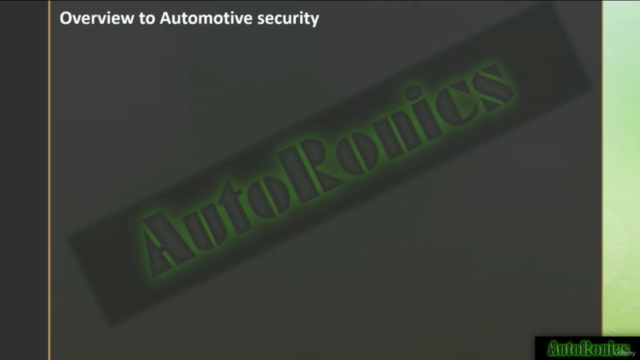
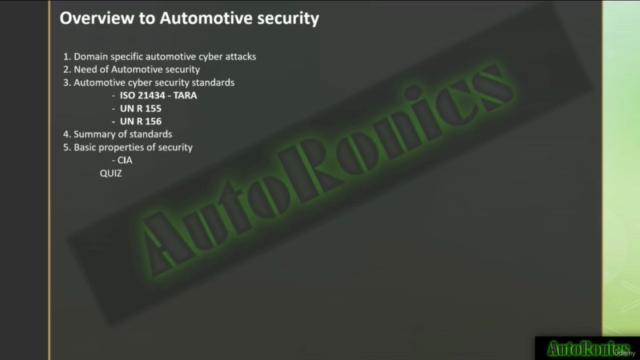
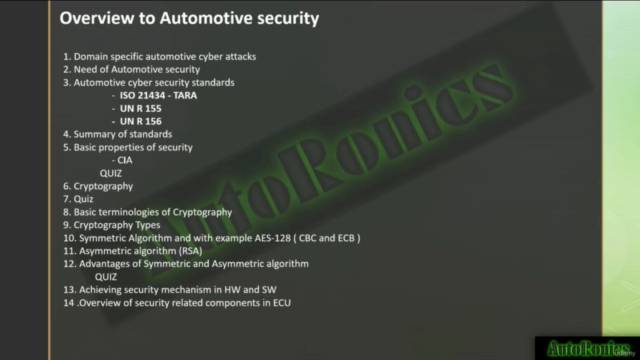
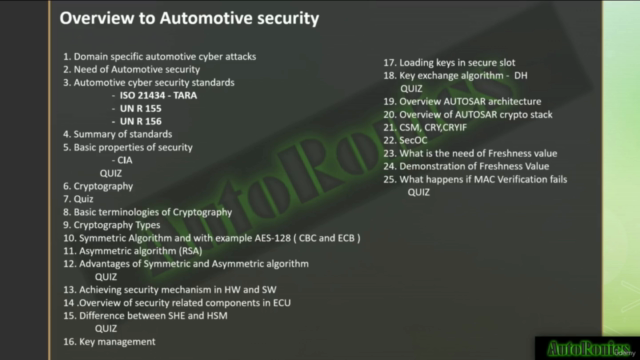
Loading charts...
Comidoc Review
Our Verdict
With meticulous attention to detail and practical insights, this automotive cybersecurity course offers a wealth of knowledge across key security standards and ECU components. However, the inconsistent audio quality and challenging pronunciation are aspects that could be improved upon, ensuring a smoother learning experience for all students.
What We Liked
- Comprehensive coverage of automotive cybersecurity with a focus on practical use cases and ISO standards such as ISO21434, UN R155, and TARA
- In-depth exploration of security-related components in ECU, secure boot, secure flash, and intrusion detection systems (IDS)
- Clear explanations of fundamental properties of security (CIA), basic terminology of cryptography, symmetric and asymmetric algorithms
- User-friendly animations to illustrate the interaction between AUTOSAR crypto models
Potential Drawbacks
- Audio quality varies across sections making some parts difficult to understand without replaying them multiple times
- Pronunciation can be challenging, resulting in a need for frequent use of the course's rewind function
- Quiz questions sometimes contain unclear or duplicate phrasing, leading to confusion
- Expired resource link for claiming an offer